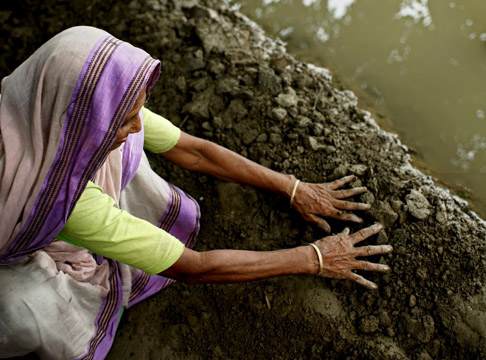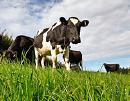When I set out to establish my understanding of the science of climate change Tim Flannery’s The Weather Makers: The History and Future Impact of Climate Change was the next book I read after Elizabeth Kolbert’s Field Notes. Kolbert provides a most valuable introduction, but Flannery immerses the reader in the full range of the science and the political reaction to it. Few stones are left unturned. He is a gifted communicator with an instinct for clarity. Science pervades the book, but always explained in terms that the lay person can follow and placed in narratives high in reader interest.
A lot has happened in climate science since the book was published in 2005. How does it stand up four years later? I started my rereading for this review with that question in mind. But not for long. It was soon apparent that Flannery’s material remains relevant and illuminating. Partly because he understood the direction in which the science was moving and often anticipates what was to come. The West Antarctic ice sheet, for example, is pointed to as perhaps vulnerable, and the possibility of more rapid sea level rise than anticipated is canvassed. The Fourth Assessment Report of the IPCC hadn’t yet appeared when he was writing, but he warns that the modus operandi of the IPCC almost guarantees reports confined to the lowest common denominator.
Flannery is an Australian environmentalist, and a very prominent one, having been named Australian of the Year in 2007. His scientific work has been in the fields of mammalogy and paeontology, not climate. Ecology has been a prominent concern for some years, as readers of his earlier book The Future Eaters will recall. He writes that for years he resisted the impulse to devote research time to climate change, being busy with other things and preferring to wait and see. But by 2001 he realised he had to learn more and by 2004 his interest had turned to anxiety. The great changes under way in the atmosphere, still something many were unaware of, presaged serious problems ahead. The issue, he came to see, would dwarf all the other issues combined.
He takes a broadly Gaian approach because it sees everything on earth as being intimately connected to everything else and because he considers reductionist world views have brought the present state of climate change upon us. Thus armed he leads the reader through the range of “Gaia’s tools” which bear on climate change, the “great aerial ocean”, the carbon cycle, the Milankovich cycles, abrupt climate changes, and many more. On the power and seduction of coal he remarks: “the past is a truly capacious land, whose stored riches are fabulous when compared with the meagre daily ration of solar radiation we receive.”
How has life on Earth already been affected by the warming so far experienced? Among the many phenomena Flannery describes are the observed poleward movement of species, changes in the food chain in Antarctica, the effects of warming for Arctic wildlife and the tundra, the bleaching of coral reefs, the extinction of the golden toad of Costa Rica, changes in rainfall in America’s west and Australia’s south, extreme weather events and rising sea level. “So swift have been the changes in ice plain science, and so great is the inertia of the oceanic juggernaut, that climate scientists are now debating whether humans have already tripped the switch that will create an ice-free Earth.”
He considers many predictions for the future. Global circulation models are described along with the possible range of temperature rise in response to CO2 levels. He outlines the catastrophic effects temperature rise will have on biodiversity in the tropical rainforests of north-eastern Queensland. “The impending destruction of Australia’s wet tropics rainforest is a biological disaster on the horizon, and the generation held responsible will be cursed by those who come after.” On extinctions worldwide he concludes that at least one in five living things on the planet is committed to extinction by existing levels of greenhouse gases; business-as-usual would likely result in three of five not being with us by the end of the century. Even deep-sea fishes are under threat of warming. He examines three of the possible main tipping points, the collapse of the Gulf Stream, the collapse of the Amazon rainforests, and methane release from the sea floor and sees rainforest collapse as the most threatening this century. Half a century of business-as-usual would make inevitable the collapse of civilisation due to climate change.
The rest of the book addresses human responses to the challenge, both political and technological. He draws some encouragement from the way CFCs were phased out in response to the threat of ozone depletion, but acknowledges the deep intransigence displayed by some industries and their political allies where climate change is concerned. Adequate technological solutions to the problem are available. Contraction and convergence is the democratic, transparent and simple form of international agreement that could be the way forward after Kyoto.
Rereading The Weather Makers is a reminder of how solidly established the basic science of climate change has been for some years now. A reminder, too, that the effects of the CO2 already in the atmosphere are still working their way slowly through the system. And a reminder of how accessible all this information has been to the lay public, carrying with it the concomitant sad reminder that many in public life who are perfectly capable of understanding the science have excused themselves the responsibility.
Australia is fortunate to have Flannery as a prominent citizen. He hasn’t stopped with his book. He continues to pursue the issue of climate change in the public arena. When the book was written there was still a feeling that though consequences were building they were still some distance off. If that provided any comfort it doesn’t any more. The Arctic sea ice melting alone has put paid to that. These days Flannery’s message is “now or never”. (I hope to review his book of that title when it is published in coming months.) In this October 2008 interview you can hear him explain the urgency that is now upon us and discuss the actions that must be taken. The compass and intellectual depth of his thinking is very apparent in his conversation with Robert Manne. May he carry weight at the political levels where crucial decisions must now be made.
Afterword:
For the sake of completeness I will mention here that the third book of the trio which formed my introduction to the science of climate change was James Lovelock’s Revenge of Gaia. I won’t be reviewing it on Hot Topic as I have since reviewed his later book The Vanishing Face of Gaia here. But in the earlier book Lovelock seemed to me to leave open hopeful possibilities of which we hear much less from him these days. I’ll repeat here the final paragraph of a short review I did for the Waikato Times back then:
The book is compelling reading, packed with intelligent insights, written in elegant and clear prose. Despair and hope jostle each other disconcertingly through its pages and Lovelock doesn’t declare for either. His prime concern is to warn us of the seriousness of the danger we have put ourselves in, though the reader may take some solace from the fact that he is also prepared to entertain possible ways of lessening the perils if only we will accept that the earth is not ours to do with as we will.
It is interesting that the figure of Lovelock often hovers in Flannery’s book and in the interview linked to above. Flannery is less pessimistic than Lovelock, but he acknowledges the wisdom of the older man’s sense of the inter-relatedness of things, and concedes that if things haven’t yet got as bad as Lovelock thinks, they aren’t too far off if we don’t soon change our ways.

 An attendee at Nick Smith’s and Tim Groser’s public “consultation†at Hamilton last week was distinctly unimpressed. He said so in a
An attendee at Nick Smith’s and Tim Groser’s public “consultation†at Hamilton last week was distinctly unimpressed. He said so in a  The Oxfam briefing paper
The Oxfam briefing paper  Could New Zealand agriculture be part of the solution to climate change? We know all too well that it is part of the problem – and that’s not an accusation, by the way, just a recognition. But problems are there to be tackled, and what is called carbon farming looks like one way in which agriculture can substantially contribute to climate change mitigation and at the same time improve the soils on which it depends.
Could New Zealand agriculture be part of the solution to climate change? We know all too well that it is part of the problem – and that’s not an accusation, by the way, just a recognition. But problems are there to be tackled, and what is called carbon farming looks like one way in which agriculture can substantially contribute to climate change mitigation and at the same time improve the soils on which it depends.